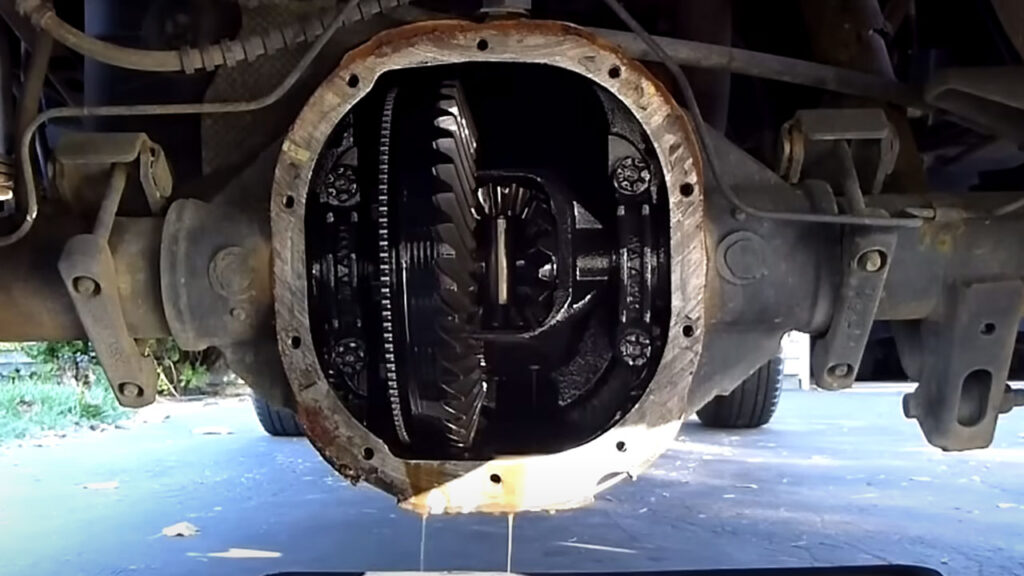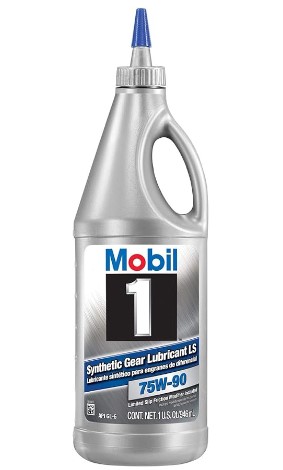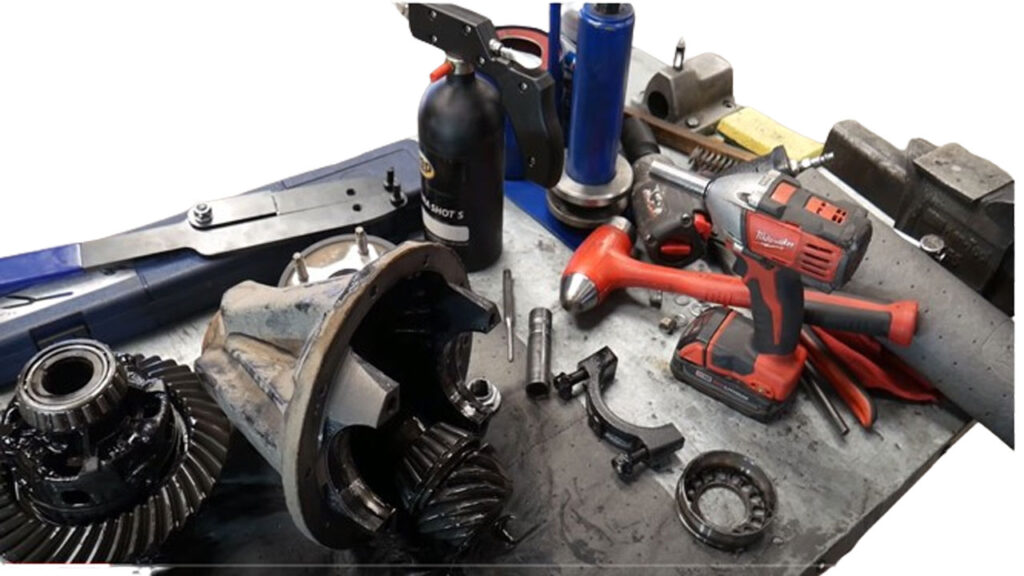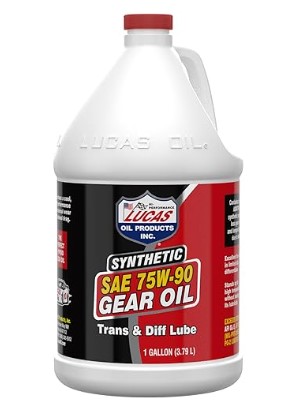Rear Differential Fluid: Types, Color, Changing Interval & More

Unleash the power beneath your vehicle with a symphony of knowledge about rear differential fluid. Rear differential fluid lubricates and cools the gears in a vehicle’s rear differential, ensuring smooth operation and preventing excessive wear.
Types:
There are two main types of rear differential fluid:
- Hypoid gear oil: This is the most common type, formulated for hypoid gears found in most rear axles. Hypoid gears experience high pressure and sliding contact, hence the specific formulation. Look for API GL-5 rating for hypoid gears.
- Limited-slip differential (LSD) fluid: Used in LSDs that enhance traction control. It contains friction modifiers to allow controlled slipping of the clutches within the LSD. Choose the manufacturer-recommended LSD fluid for optimal performance.
Color:
Rear differential fluid can vary in color, but it’s typically:
- Amber or light brown: Fresh fluid often has this translucent hue.
- Darker brown or black: Aged or heavily used fluid might darken due to normal wear and tear.
- Reddish tint: Some synthetic fluids might have a slight reddish tinge.
Changing Interval:
The recommended change interval for rear differential fluid depends on several factors, including:
- Your car’s make and model: Consult your owner’s manual for the specific manufacturer recommendation. It can range from 30,000 to 60,000 miles for regular use, but might be shorter for severe conditions like towing or off-roading.
- Driving conditions: Towing, off-roading, or frequent heavy loads can stress the differential and shorten the fluid’s life.
- Fluid type: Synthetic fluids generally have longer change intervals compared to conventional oils.
Buckle up as we explore the dynamic realm of rear differential fluid – where every drop counts.
What Is A Differential In A Car?
A differential in a car is a component in the drivetrain that enables the wheels to rotate at different speeds while still receiving power from the engine. It allows smooth turning and compensates for variations in wheel speed.
Differential Fluid Change Cost
Here’s a general estimate of differential fluid change costs:
- Single differential with standard gear oil: Between $100 and $250
- Single differential with high-performance gear oil: Between $150 and $300
- Dual differentials with standard gear oil: Between $200 and $400
- Dual differentials with high-performance gear oil: Between $300 and $500
If You Never Change Differential Fluid What Will Happen?
Here are some potential consequences of neglecting differential fluid changes:
1. Contamination
Over time, the differential fluid can become contaminated. This contamination can lead to increased friction and wear on the differential components.
2. Reduced Lubrication
If the fluid breaks down or becomes too contaminated, it may lose its lubricating properties, leading to increased friction and heat.
3. Increased Wear
Without proper lubrication, the gears and bearings in the differential can experience increased wear. This wear can lead to a reduction in performance.
4. Overheating
As the fluid loses its ability to dissipate heat due to contamination or breakdown.
5. Poor Performance
Neglecting differential maintenance can affect the overall performance of your vehicle.
6. Costly Repairs
If differential problems are left unaddressed for an extended period, it can lead to more severe damage and result in costly repairs.
Rear Differential Leak
A rear differential leak occurs when differential oil escapes from the housing, leading to potential lubrication issues. Identifying and repairing the leak promptly is crucial to prevent damage to the differential.

Transfer Case Service
Transfer case service involves inspecting, draining, and refilling the transfer case fluid, checking for leaks, and ensuring proper functionality. Regular maintenance helps extend the life of the transfer case in vehicles.
Rear Differential Fluid Change Cost
$80 to $200: This is the usual range for a single rear differential change with standard gear oil. Labor costs and fluid type can significantly impact this range.
Rear Differential Fluid Honda CRV
Honda recommends using Honda Dual Pump Fluid II (DPSF-II) specifically for the rear differential in CR-Vs. The rear differential in a Honda CR-V typically holds around 1.32 quarts (1.247 liters) of fluid.
Differential Fluid Change Cost Jiffy Lube
The cost of a differential fluid change at Jiffy Lube is $165. Keep in mind that prices may vary depending on location and the specific requirements of your vehicle.
Signs Of Low Differential Fluid
Here are 15 signs that may indicate low differential fluid:
- Whining Noise
- Clunking Sounds
- Vibrations
- Overheating
- Leaking Fluid
- Burning Smell
- Difficulty Turning
- Unusual Tire Wear
- Hard Shifting
- Slipping Gears
- Increased Fuel Consumption
- Visible Damage
- Metallic Debris in Fluid
- Fluid Contamination
- Dashboard Warning Lights
Rear Differential Service Cost
Here’s a general estimate of rear differential service costs:
- Fluid change: Between $100 and $250
- Fluid change with gasket replacement: Between $150 and $300
- Fluid change with seal replacement: Between $200 and $500
- Major repairs with internal component replacement: Can range from $500 to $1500 or more, depending on the severity and parts needed.
Best Oil For Differential
The Mobil 1 104361 75W-90 Synthetic Gear Lube is a popular choice for differential lubrication. It is a high-performance synthetic gear oil designed to provide excellent protection and performance for differentials, manual transmissions, and transfer cases. The 75W-90 viscosity rating indicates its suitability for a wide range of temperatures.

How Often To Change Rear Differential Fluid?
The frequency of changing rear differential fluid can vary depending on the vehicle make and model. However, a common recommendation is to change the rear differential fluid every 30,000 to 50,000 miles.
How Much To Change Differential Fluid?
In general, the cost for a differential fluid change can range from $70 to $150, but it’s important to note that this is a rough estimate.
Color Of Differential Fluid
Differential fluid typically ranges in color from light amber to light brown.
Differential Oil Types
There are different types of differential oils, and two common categories are:
1. Mineral Oil
Source: Mineral oil is derived from crude oil through a refining process.
Composition: It contains hydrocarbons and other additives to enhance its lubricating properties.
2. Synthetic Differential Fluid
Source: Synthetic differential fluid is chemically engineered rather than being derived from crude oil.
Composition: It is composed of synthesized molecules designed to provide superior lubrication and performance.
Rear Differential Rebuild
Here’s a general overview of the steps involved in a rear differential rebuild:
1. Lift and Secure the Vehicle
Use a jack to lift the rear of the vehicle and secure it on jack stands. Ensure the vehicle is stable and won’t move during the process.
2. Remove the Wheels
Use a lug wrench to remove the rear wheels, exposing the differential housing.
3. Drain the Differential Fluid
Locate the differential fluid drain plug and remove it to drain the old fluid into a pan. Dispose of the old fluid properly.
4. Remove the Differential Cover
Use a socket wrench to remove the bolts securing the differential cover. Carefully pry the cover off to access the internals.
5. Replace Bearings and Seals
Use the appropriate tools to remove and replace bearings and seals. A bearing puller and press may be necessary for this step.
6. Reassemble Components
Carefully reassemble the differential, ensuring proper placement of gears, bearings, and seals.
7. Seal the Differential Cover
Apply gasket sealant to the differential cover, then carefully position the cover and secure it with bolts.
8. Refill with Differential Fluid
Fill the differential with the recommended type and amount of differential fluid. Check the vehicle’s manual for specifications.
9. Test Drive
Take the vehicle for a short test drive to ensure everything is functioning correctly.

Front Differential Seal
A front differential seal plays a vital role in your car’s drivetrain system. It sits between the axle shaft and the differential housing, preventing differential fluid from leaking out while also keeping dirt and debris from entering the differential itself.
Rear Differential Fluid Honda Pilot
Honda recommends using Honda Dual Pump Fluid II (DPSF-II) specifically for the rear differential in Pilot models.
How To Add Rear Differential Fluid
Here’s a breakdown of the process for adding rear differential fluid:
1. Drain old fluid (if changing)
Locate the drain plug and place the container underneath. Carefully loosen the plug and allow the old fluid to drain completely.
2. Open the fill plug
Unscrew the fill plug carefully.
3. Add the new fluid
Using the funnel, slowly pour the recommended amount of differential fluid as specified in your car’s manual. Avoid overfilling.
4. Check the level
With the car still level, insert a dipstick (if your car has one) or use a pump with a clear tube to check the fluid level. It should be at the appropriate mark as indicated in your manual.
5. Reinstall the plugs
Tighten the fill and drain plugs securely, but don’t overtighten. Use a torque wrench if specified in your manual.
6. Test drive
Take your car for a short drive and listen for any unusual noises or leaks.
How To Check Gear Oil
- Locate the dipstick: It’s usually near the back of the engine compartment, close to the firewall. Look for a brightly colored loop or handle.
- Pull out the dipstick and wipe it clean: Use a lint-free rag to remove any oil residue.
- Reinsert the dipstick fully: Push it back down into its tube until it stops.
- Pull out the dipstick again and check the level: The oil level should be within the marked area on the dipstick, typically indicated by notches or crosshatching.
Water In Differential
Water promotes rust and corrosion within the differential, damaging gears, bearings, and seals. This can lead to increased wear and tear, noise, leaks, and eventually complete failure of the differential.
Front Differential Symptoms
Here are some key signs to watch out for:
- Whining or whirring: A constant whining or whirring sound originating from the front of the vehicle.
- Vibration: You might feel vibrations in the steering wheel or throughout the vehicle, especially at higher speeds or during acceleration.
- Loss of traction: In severe cases, a failing differential can lead to a loss of traction.
- Leaking fluid: It could be a sign of a damaged seal or gasket within the differential.

Best Synthetic Differential Gear Oil
Lucas Oil is a well-known brand in the automotive industry, and their Synthetic Racing Gear Oil is formulated specifically for high-performance racing applications. It is designed to provide excellent thermal stability and resistance to extreme pressure,.

Rear Differential Service How Often
In general, many automotive experts suggest having the rear differential fluid changed every 30,000 to 60,000 miles.
F150 Differential Fluid Change Frequency
Many experts recommend changing the differential fluid every 150,000 miles for normal driving conditions.
Lexus Differential Fluid Change
Here’s what you need to know:
- Lift the vehicle using a jack and secure it with jack stands.
- Locate the differential fluid drain and fill plugs.
- Remove the fill plug first to ensure easier drainage.
- Remove the drain plug and let the old fluid drain into the pan.
- Replace the drain plug and fill the differential with the new fluid using the funnel.
- Replace the fill plug securely.
- Lower the vehicle and check for leaks.
Limited Slip Differential Oil Change Interval
Change the limited slip differential oil every 50,000 miles to ensure optimal performance and longevity.
Hummer H1 Differential Oil
Hummer recommends using ACDelco 10-4108 Synthetic Gear Oil for both the front and rear differentials in the H1. This is a high-performance synthetic oil formulated to withstand the demanding conditions your Hummer might encounter.
Replace Rear Differential Fluid Cost
The cost of replacing rear differential fluid can vary depending on several factors, but typically falls within the range of $80 to $200.
FAQs
How often to change transfer case fluid?
Transfer case fluid should generally be changed every 30,000 to 60,000 miles, but it’s advisable to check the vehicle’s manual for manufacturer-specific recommendations.
Can you drive without rear differential?
While possible, driving without a rear differential can damage the drivetrain, affect stability, and reduce control. It’s not recommended for long-term use.
What is differential fluid lubrication?
Differential fluid lubricates and cools the gears in a differential, preventing wear and reducing friction. Regular maintenance ensures optimal performance and extends the lifespan of the differential.
What does a bad rear differential sound like?
A whining, clunking, or grinding noise from the rear of the vehicle may indicate a bad rear differential. Fluid leaks or excessive play can also be signs of issues.
How long do differentials last?
Differentials can last 100,000 miles or more with proper maintenance. Regular fluid changes and inspections contribute to a longer lifespan for both front and rear differentials.
What is the difference between a gearbox and a differential?
A gearbox transfers power from the engine to the wheels, allowing speed variation. A differential, located on the axle, distributes torque between the wheels, enabling smooth turns without wheel slippage.
How does a rear differential work?
The rear differential splits torque between the rear wheels, allowing them to rotate at different speeds during turns. It contains gears and a lubricating fluid to ensure smooth operation and prevent damage.

Conclusion
Maintaining your rear differential fluid is crucial for a smooth and efficient vehicle performance. Regularly check for the manufacturer’s recommendations on fluid type and color.
Change the fluid at recommended intervals to ensure optimal lubrication and prevent costly damage. A little attention to your rear differential can go a long way in extending the life of your vehicle.





